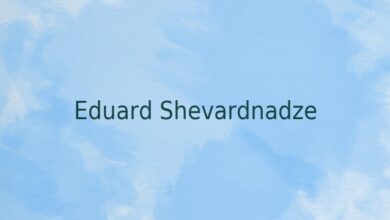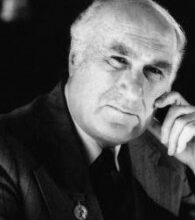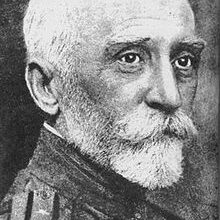
DOCUMENTED FACTS AND INFORMATION
Facts and information 1564 – 1595
1564, 26th April – William Shakspere of Stratford Parish Register of Holy Trinity Church Baptismal record. An entry in the Stratford Parish baptismal register reads, “Guliemus filius Johannes Shakspere”; that is, “William son of John Shakspere”
1582, 27th November – Marriage license record. An entry in the Bishop of Worcester’s Register, Worcestershire Record Office, recorded the grant of a marriage license to “wm Shaxpere et Anna whateley”
1582, 28th November – Marriage license bond, Bishop of Worcester’s Register, Worcestershire Record Office. The bond is for the marriage of “willm Shagspere and Anne hathwey,” under the special condition of a single asking of the banns.
1595, 15th March – Royal record.The Accounts of the Treasurer of the Chamber “To William Kempe, William Shakespeare and Richard Burbage, servaunts to the Lord Chamberleyne, upon the Councille’s warrant dated at Whitehall XVth Marcij 1594, for two severall comedies or enterludes shewed by them before her majestie in Christmas tyme laste part viz St. Stephen’s daye and Innocents daye…”
1596, 20th October – The application would have cost 30 guineas. Heraldic documents were processed and the description of the Coat of Arms grant to Shakespeare was as follows:
‘Gold, on a bend (diagonal bar) sable (black), a spear of the first (i.e. gold), steeled argent (with a silver tip); and for his crest… a falcon his wings displayed argent (silver), standing on a wreath of his colours supporting a spear gold, steeled as aforesaid, (i.e. silver) set upon a helmet with mantles and tassles’.
The motto was “Non sanz droict” or “Not without right”.
The interpretation of the description of the Coat of Arms granted to Shakespeare would have been the choice of the designer chosen by the Shakespeare family. The crest design would have not formed part of the Heraldic Documentation. As such an original crest is not in existence there are various interpretations of the Shakespeare Coat of Arms. None of these can be viewed as facts
The image on the right is an interpretation of the description of the Coat of Arms designed by william-shakespeare.info and not to be viewed as fact.
Facts and information about the Bard 1596 – 1599
1596 – Michaelmas – Court record. William Wayte “swore before the Judge of Queen’s Bench that he stood in danger of death, or bodily hurt,” from “William Shakspere” and three others. “The magistrate then commanded the sheriff of the appropriate county to produce the accused … who had to post bond to keep the peace, on pain of forfeiting the security”
1597, 5th April – Property documents. Shakspere bought New Place, paying a £60 fine which “may well seem absurdly low; but in fines of this period the consideration mentioned is customarily a legal fiction. It is not known how much Shakespeare actually paid.” The house was the second largest in Stratford, “No fewer than ten fireplaces warmed New Place in winter, and there were probably more rooms than fireplaces, the latter being a taxable luxury”
1597 , 15th November – Tax record. Shakspere (William Shakespeare) is named in the King’s Remembrancer Subsidy Roll as a tax defaulter in Bishopgate ward who failed to pay an assessed 5 shillings
1598 – List of Actors. In the initial presentation of Ben Jonson’s Euery Man In His Hvmovr, “Will Shakespeare” was a “principall Comoedian”
1598, 1st December – Bill of sale. Chamberlain’s Accounts Wyllyn Wyatt Chamberlin “Pd to Mr. Shakespere for one load of stone xd”
1598, 24th January – Letter – Abraham Sturley wrote to his brother-in-law that “our countriman mr Shaksper is willing to disburse some monei upon some od yardeland or other Shottrei or neare about us…”
1598, 4th February – List of Hoarders. Shakspere (William Shakespeare) is named as having illegally held 10 quarters (80 bushels) of malt or corn during a shortage
1598, 1st October – Tax record. In the King’s Remembrancer Subsidy Roll, Shakspere is listed as a tax defaulter who failed to pay an assessed 13s..4d
1598, 25th October Letter. Richard Quiney wrote an undelivered letter asking Shakspere for a £30 loan.
1598 September – Tax record. In the Lord Treasurer’s Remembrancer Accounts of Subsidies, Shakspere is listed among those in Bishopgate ward who have moved out of the district
1599 – Heraldic document, College of Arms. John Shakspere sought to add his wife’s family arms to the Shakspere arms acquired 1596
1599, 21st February – Property document . A tripartite lease for the Globe Theater consisted of an agreement between Sir Nicholas Brend (grounds owner), the Burbage brothers, and five members of the Lord Chamberlain’s company, which included Shakspere. It was described by John Heminges and Henry Condell in their testimony during the 1619 Court of Requests action Witter v. Heminges and Condell.
1599 – Inventory of Sir Thomas Brend. Shakspere and others (unnamed) are said to be occupying the Globe Theater
1599 6th October – Tax record. Shakspere is among those listed in the Lord Treasurer’s Remembrancer Residuum London accounts as delinquents owing back-taxes “The marginal note Surrey, and the reference to ‘Residuum Sussex’, added later, signify that Shakespeare had migrated across the river to the Surrey Bankside”
Facts and information 1600 – 1605
1600 – Court record. “Willelmus Shackspere” brought suit against John Clayton for a £7 debt.
1600, 6th October – Tax record. Shakspere is listed in the Lord Treasurer’s Remembrancer Residuum Sussex accounts “tax bill of 13s..4d. is still outstanding. The notation Episcopo Wintonensi in the left-hand margin indicates that the Court of Exchequer had referred the dramatist’s arrears to the Bishop of Winchester, whose liberty of the Clink in Surrey lay outside the sheriff’s jurisdiction. The Clink was a notorious debtors prison of the age.
1601, 25th March – Will of Thomas Whittington, Worcestershire Record Office. “Item I geve and bequeth unto the poore people of Stratford 40s that is in the hand of Anne Shaxspere, wyf unto Mr. Wyllyam Shaxspere, and is due debt unto me…” (William Shakespeare)
1602 Michaelmas – Property document, Public Records Office, Court of Common Pleas. New Place was reconveyed to Shakspere, who paid a fee equal to one fourth of the property’s yearly value
1602, 1st May – Property document. For £320, Shakspere bought 107 acres of land and 20 acres of pasture in Old Stratford from William and John Combe
1602, 28th September – Property document. Shakspere (William Shakespeare) acquired a quarter-acre of land with “Chapel Lane Cottage” and a garden
1603 – List of Actors. In the initial presentation of Ben Jonson’s Seianvs his Fall, “Will. Shake-speare” was a “principall Tragoedian”(William Shakespeare)
1603 17th/18th May – Royal documents – Warrants for the Great Seal. Two identically worded warrants were written for letters patent authorizing “William Shakespeare…and the rest of theire Assosiates freely to use and exercise the Arte and faculty of playinge Comedies Tragedies histories Enterludes moralls pastoralls Stageplaies and suche others like as theie have alreadie studied or hereafter shall use or studie aswell for the recreation of our lovinge Subjectes as for our Solace and pleasure when wee shall thincke good to see them duringe our pleasure…”
1603, 19th May – Royal document.Public Record Office. A Royal Patent “instructs all justices, mayors, other officers, and loving subjects ‘to allowe them such former Curtesies as hath bene given to men of theire place and quallitie and alsoe what further favour you shall shewe to theeise our Servauntes for our sake’, for such favour ‘wee shall take kindlie at your handes'”
1604 – Court record. Shakspere (William Shakespeare) sued the apothecary Philip Rogers for 35s..10d plus 10 shillings damages, seeking to recover the unpaid balance on a sale of twenty bushels of malt and a small loan
1604, 15th March – Royal record. Public Record Office, Lord Chamberlain’s Department. In the Master of the Wardrobe record, Shakspere (William Shakespeare) is listed among “Players” who were given scarlet cloth to be worn for the King’s Royal Procession through London
1604, 24th October – Land survey.Public Record Office, Exchequer. A survey of Rowington manor reported that “William Shakespere Lykewise holdeth there one cottage and one garden by estimation a quarter of one acre and payeth rent yearly”
1605 4th May – Will of Augustine Phillips. Public Record Office “Item I geve and bequeathe to my ffellowe william Shakespeare a Thirty shillings peece in gould”
1605, 24th July – Property documents. Shakspere (William Shakespeare) purchased from Ralph Hubaud “a half-interest in a lease of ‘Tythes of Corne grayne blade & heye’ in three nearby hamlets … along with the small tithes of the whole of Stratford parish, with certain exceptions honouring former rights”
Facts and information 1606 – 1616
1606 – Inventory for Ralph Hubaud. After his death, an inventory of Hubaud’s land and goods included the notation that “There was Owinge by Mr. Shakspre …” (William Shakespeare)
1608 – 17th August to 1609 7th June – Court records. Shakspere brought suit against John Addenbrooke for £6, plus 24s. damages. Shakspere (William Shakespeare) won and an order was issued for Addenbrooke’s arrest.
1610 – Property documents, Public Record Office. A Court of Common Pleas fine served to confirm Shakspere’s (William Shakespeare) title to 107 acres of land and 20 acres of pasture purchased in 1602 from William Combe
1611, 11th September – List of Contributors. William Shakspere’s name appears on a list of those supporting “the Charge of prosecutynge [a] Bill in parliament for the better Repayre of the highe waies and amendinge divers defectes in the Statues alredy made”
1612, 11th May to 19th June – Court records. Public Record Office, Court of Requests Shakspere (William Shakespeare) was called into court and asked to resolve a dispute regarding the amount offered by him as dowery when he helped negotiate a marriage in 1604 (, Belott v. Mountjoy; etc.). “Only Shakespeare himself could resolve the question … but what the portion was, or when it was to be paid, Shakespeare could not say…. The witness likewise professed ignorance of ‘what implementes and necessaries of houshold stuff’ Mountjoy gave with Mary”
1613, 28th January – Will of John Combe. Public Record Office He bequeathed £5 to “mr William Shackspere” (William Shakespeare)
1613, 10th March – Property documents. Henry Walker’s Blackfriars Gate-house was bought by Shakspere (William Shakespeare), William Johnson, John Jackson, and John Hemming for £140.
1613, 31st March – Record of payment. Accounts of the Steward of the Earl of Rutland For work on the Earl of Rutland’s impresa, payments were made “To Mr. Shakspeare in gold, about my Lordes impreso, xlivs.; To Richard Burbage for painting and making it, xlivs.” The “impreso” was a symbolic design on a shield which the Earl displayed during a tilt.
1615, 26th April – Court record. On a Court of Chancery bill of complaint, Shakspere is listed among those who sought to obtain Blackfriars property documents
1615, May – Court record. Thomasina Ostler’s court plea has a list of shareholders for the Globe Theater and Blackfriars property which includes Shakspere’s name
1616, 25th March – Last Will and Testament of William Shakspere (William Shakespeare) – Public Records Office,
Principal Probate Registry, Selected Wills
1616, 25th April – Burial record. The burial of “Will Shakspeare gent” is recorded in the Stratford parish register
THE WILLIAM SHAKESPEARE FACTS, INFORMATION AND TIMELINE
The William Shakespeare Timeline is comprehensive and divided into three parts. It documents the important events and facts which occurred and would have been important to William Shakespeares’s life. The Renaissance was a fascinating period of history. New Worlds were being discovered! New inventions were being introduced – the timeline for each period will detail all the facts. Beliefs were being challenged. New Religions were being followed. People were looking at Art, Literature and Science from a different perspective. All of this plus the usual expected events, information and facts from history such as wars, religion, executions, massacres, plagues and pestilence!





